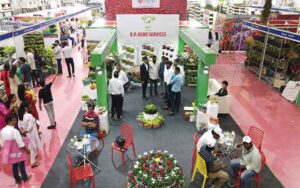Objectives & Initiatives of Horticulture Cluster Development Programme
The horticulture industry in India has emerged as a potential agricultural business. India is the second-largest horticulture crop producer in the world and is expanding rapidly with great potential. The Cluster Development Programme (CDP) for the horticulture industry has been developed by the Indian government’s Ministry of Agriculture and Farmers Welfare (MoA&FW), enhancing the sector’s global competitiveness.
The National Horticulture Board (NHB) puts CPD into action to help the identified horticulture clusters grow and develop. Garden crops, fruits, vegetables, and ornamental plants are the focus of horticulture.
Objectives
• In order to make cluster crops more competitive, CDP wants to create brands that are only for that cluster.
• To increase the export of the crops targeted.
• To encourage more people to use good agricultural practices, which will lower production costs and improve product quality.
• To promote and increase the production of a new crop variety.
• It also aims to build the right infrastructure to make storage better and cut down on losses after harvest.
• To boost horticulture clusters integrated and market-driven development.
• CDP intends to develop and implement multimodal transport systems in order to facilitate the effective evacuation of produce.
• Expanding private area support in the market to bring speculation.
Initiatives taken for Horticulture
• National Horticulture Mission (NHM): Under the 10th five-year plan it began. The Indian government promotes it as an Indian Horticulture Scheme. It aims to increase horticulture production, increase nutritional security, and provide farm families with income support. Additionally, it aims to promote, develop, and spread scientific technology.
• Horticulture Mission for North East and Himalaya States (HMNEH): This mission was established to address issues pertaining to the North Eastern states horticultural crop production and productivity, post-harvest handling, marketing, and processing. This mission comprises of four smaller than normal missions to improve cultivation crop advancement.
• National Horticulture Board (NHB): The Indian government established it in 1984 as an independent organization that falls under the Ministry of Agriculture and Farmers Welfare. It was promoted for a variety of reasons, including the development of high-tech commercial horticulture in specific belts, the creation of infrastructure for post-harvest management, the popularization of specific new technologies, the promotion of fresh horticulture produce, and etc.
• Coconut Development Board (CDB): The Coconut Development Board (CDB), a statutory body established by the Indian government, is responsible for the country’s integrated development of coconut production and use. It works to adopt measures that will help the coconut industry grow, provides technical advice to those who work in it, provides financial support, encourages the use of modern technology, sets standards for the production of coconuts and coconut products, collects production statistics, and does publicity work.
• Central Institute of Horticulture (CIH), Nagaland: In 2005-2006, the Ministry of Agriculture and Farmers Welfare and the Department of Agriculture, Cooperation, and Farmers Welfare established CIH. The institution is working to help the horticulture industry grow at an exponential rate.

















